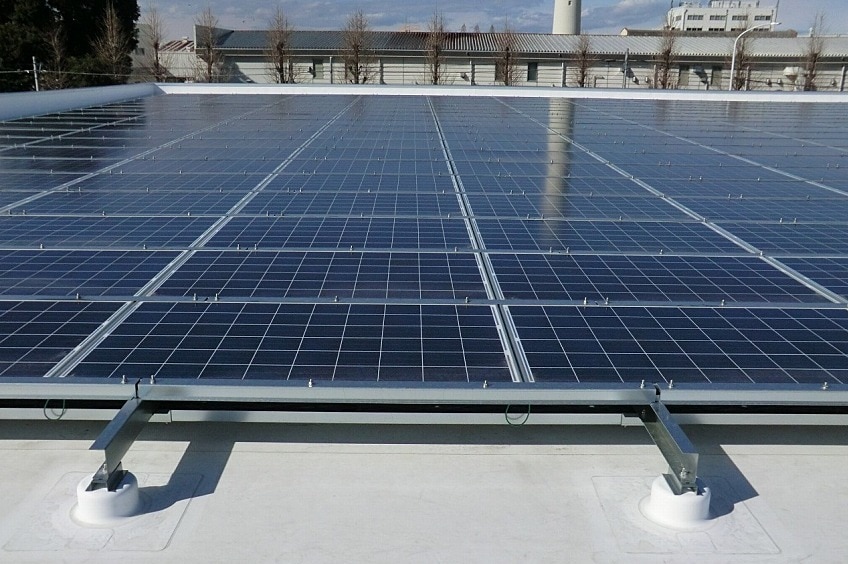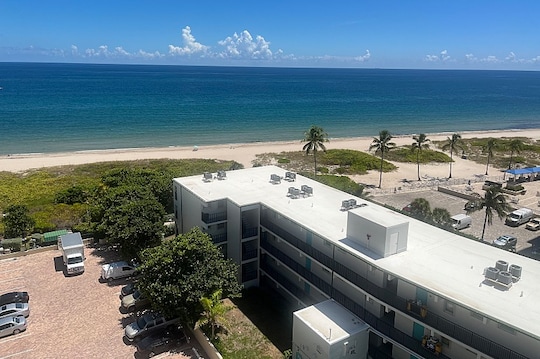
At the end of 2014, there were 16,000 megawatts (MW) of installed solar power capacity in the U.S. Of that, around 4,750 MW were from commercial PV installations, which include low-slope rooftop installations (the remaining was from residential and utility installations). There is little doubt that solar power has become significant; in comparison, coal-fired power plants typically are between 400 to 600 MW each. Also, because efficiency is a factor, the most efficient U.S. coal-fired plant is right around 40% (the John W. Turk Plant in Arkansas).
Looking at past trends of solar installations as shown in the chart below, it's clear that we can expect continued rapid growth and falling solar costs that will help grow and expand the solar market.
Although it varies depending on local circumstances, overall today, the cost of solar power has become competitive with traditional generation.
So, how do our roofing membrane choices play into this? There are several things to consider when selecting a membrane for a roof that might have a solar installation added.
Ease of Installation
Typical single-ply roofs have even surfaces that can be easily marked off and worked on during a solar installation. Wide and long sheets mean there are fewer seams and smooth surfaces mean that installers can rapidly get attachments and flashings installed.
Long-Term Roof Performance
No one wants to have to repair a roof that has a large solar array overburden. However, if the membrane is a multi-ply system, the job of even finding a leak gets exponentially harder. Solar arrays can't be "moved out of the way"—they are permanent and restrict access to the membrane. This again points to why single-ply membranes are the best choice.
However, membrane choice also comes down to the expected lifetime of the array versus that of the roof. Many studies have shown that solar arrays could be producing power well beyond 25 years. That makes it important to select a supplier and membrane type that can offer confidence in weathering resistance. EverGuard Extreme® is a good example of a membrane designed for long-term weather resistance, backed by an industry-leading warranty.
Solar Array Efficiency
The temperature of solar panels is a significant factor affecting how much electricity the panels produce. This is generally measured by the "temperature coefficient" of the solar panels, which is the percentage loss in efficiency per degree rise in temperature. So, as panels get hotter, they produce less power.
As listed on solar panel spec sheets, the power efficiency of an average panel is 16.21% at 111.2°F (45°C) and the "maximum power temperature coefficient" is -0.42% per °C. This means that the panel would lose 0.42% of its power output for every 1°C rise in rooftop temperature above 45°C (111.2°F). So, let's take a look at what that means for some typical roofs:
The GAF EverGuard Extreme® TPO membrane was designed to substantially reduce rooftop temperature. For instance, on a sunny day with an ambient air temperature of 89°F (32°C), the roof temperature measured on an EPDM, dark roof was 173°F (78°C), resulting in a 13.86% decrease in energy efficiency from the standard system; the roof temperature measured on an EverGuard Extreme® TPO roof was only 116°F (46.6°C), resulting in a decrease of only 0.67% in energy efficiency.
Of course, this is approximate because the air temperature around the panels might be slightly lower. However, it's clear that reflective membranes can result in more power output from solar arrays. This has actually been demonstrated in independent tests. So, typically we would expect the efficiency of a solar array to be about 13% higher when installed over a highly reflective membrane such as EverGuard Extreme® TPO, compared to a dark membrane with low reflectance.
Long-Term Membrane Reflectance
The reflectivity of a rooftop membrane is established through certifications by institutions such as the Cool Roof Rating Council (CRRC) or the ENERGY STAR® rating program administered by the Department of Energy and the Environmental Protection Agency. CRRC publishes searchable radiative data online. The reflectivity (Total Solar Reflectance or TSR) is the fraction of sunlight that a surface reflects and is measured on a scale of 0 to 1 (for example, a surface that reflects 55% of sunlight has a total solar reflectance of 0.55). According to the CRRC, the initial TSR for a typical dark EPDM membrane is a paltry 0.06 (or 3-year aged TSR of 0.07), while the TSR for the EverGuard Extreme® TPO roof is 0.835 (or 3-year aged TSR of 0.73)!
The following is a picture of a TPO roof with a solar array in New Jersey installed over 5 years ago.
The roof has never been cleaned, as can be seen by the dirt under the panels. But, where the membrane is fully exposed, rain has kept the membrane white and reflective. Clearly, based on their reflectivity, ease of maintenance, and longevity, white TPO membranes are the best choice for these applications.
Lead photo credit: Sanko Fukaya Factory Administrative Office





